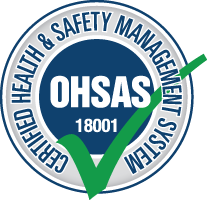OHSAS 18001:2015



The OHSAS 18001 standard was developed to bridge the gap where no international standard existed for occupational health and safety. Development involved input from a number of leading bodies, including certifiers, trade bodies and expert consultancies.
The first version of the standard appeared in 1999 and was based on a number of existing standards that had been developed by the leading national certification bodies.
The current version of the standard is OHSAS 18001:2015. This supersedes OHSAS 18001:1999, which was phased out in July 2009.
OHSAS 18001 Certification is the recognised specification for the management of Occupational Health and Safety. It was developed in response to industry demand for a standardised health and safety management system standard that could be externally assessed and certified. OHSAS 18001 is not a legislative requirement but it does enable organisations to identify pertinent legislation, control risks and improve performance.
OHSAS 18001:2015 Occupational, Health and Safety Management Certification provides a framework to identify, control and decrease the risks associated with health and safety within your company. Completing OHSAS 18001 certification will indicate to all of your stakeholders that as an organisation you you’re your company’s employee’s health and safety as a principal priority within your business.
In the United Kingdom, as well as in other enlightened nations, more and more organisations are utilising OHSAS 18001:2015 to manage their corporate health and safety responsibilities.